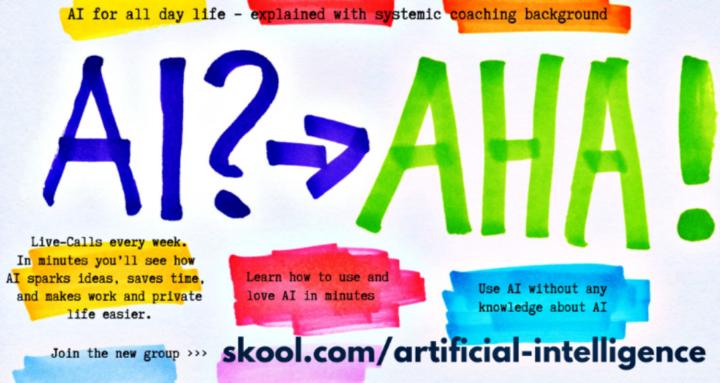Active Learning – Human in the Loop HITL
Active Learning – Human in the Loop HITL:
Active learning strategically selects the most informative examples for labeling, minimizing annotation costs while maximizing model performance through intelligent query strategies. The engineering challenge involves designing effective sampling strategies, balancing exploration versus exploitation, implementing efficient query algorithms at scale, handling batch selection for parallel annotation, and maintaining diversity while focusing on uncertain examples.
Active Learning Explained for Beginners
- Active learning is like a student who asks the most important questions instead of randomly studying everything - imagine preparing for an exam by identifying exactly which practice problems will teach you the most, rather than doing every problem in the textbook. The AI similarly picks the most confusing or informative examples to learn from, getting smart faster with fewer labeled examples, like a curious student who knows what they don't know.
What Makes Active Learning Efficient?
Active learning reduces labeling requirements by focusing human effort on examples that maximize learning. Label efficiency: achieving target performance with 10-30% of labels versus random sampling. Query strategy: intelligent selection based on model uncertainty or expected improvement. Human-in-the-loop: leveraging human expertise where most valuable not uniformly. Iterative process: train → query → label → retrain cycles progressively improving. Cost reduction: minimizing expensive expert annotation in medical, legal domains. Exploration-exploitation: balancing uncertain regions with representative coverage.
How Do Uncertainty Sampling Methods Work?
Uncertainty sampling queries examples where the model is least confident about predictions. Least confidence: selecting examples with lowest maximum class probability. Margin sampling: smallest difference between top two class probabilities. Entropy-based: highest entropy in predicted probability distribution. Posterior variance: for regression, selecting highest predicted variance. Ensemble disagreement: querying where multiple models disagree most. Practical efficiency: simple to implement, computationally cheap, effective baseline.
What Is Query-By-Committee?
Query-by-committee uses ensemble disagreement to identify informative examples. Committee formation: training multiple models on same data with different initializations. Disagreement measures: vote entropy, KL divergence between predictions. Diversity maintenance: ensuring committee members remain distinct. Bayesian approach: sampling from posterior distribution over models. Version space reduction: selecting examples maximally reducing hypothesis space. Theoretical foundations: connection to information theory and PAC learning.
How Does Expected Error Reduction Work?
Expected error reduction selects examples that most reduce future prediction errors. Loss prediction: estimating reduction in validation error from labeling example. Monte Carlo estimation: simulating different possible labels and impacts. Computational cost: requires retraining for each candidate, expensive. Approximations: using influence functions or gradient-based estimates. Batch selection: choosing sets minimizing expected error jointly. Optimal but impractical: best theoretical performance, prohibitive computation.
What Are Diversity-Based Strategies?
Diversity sampling ensures broad coverage preventing focus on narrow regions. Representative sampling: selecting examples covering input distribution. Clustering-based: choosing representatives from each cluster. Core-set selection: minimizing maximum distance to selected set. Determinantal point processes: probabilistic selection favoring diversity. Hybrid approaches: combining diversity with uncertainty for balance. Avoiding redundancy: preventing selection of similar examples.
How Do Information-Theoretic Methods Work?
Information-theoretic approaches maximize information gain from labeled examples. Mutual information: selecting examples maximizing MI with model parameters. BALD (Bayesian Active Learning by Disagreement): maximizing information about parameters. Expected information gain: reduction in entropy about predictions. Fisher information: selecting examples with highest Fisher information. Submodularity: enabling efficient greedy optimization with guarantees. Theoretical optimality: principled framework with performance bounds.
What Is Deep Active Learning?
Deep active learning adapts strategies for neural networks with unique challenges. Representation learning: using learned features for similarity assessment. Gradient-based selection: using gradient norms indicating example influence. Adversarial sampling: selecting examples near decision boundary. Core-set in feature space: diversity in learned representations. Batch selection: choosing diverse batches for parallel annotation. Cold start problem: initial random sampling before meaningful features.
How Do You Handle Batch Selection?
Batch active learning selects multiple examples simultaneously for parallel annotation. Diversity constraints: ensuring batch covers different regions. Submodular optimization: diminishing returns property enabling greedy selection. Clustering approaches: selecting from different clusters simultaneously. Uncertainty-diversity trade-off: balancing informative with representative. Parallel annotation: enabling multiple annotators working simultaneously. Computational efficiency: batch selection amortizing selection cost.
What Are Pool-Based vs Stream Settings?
Different active learning scenarios require different approaches. Pool-based: large unlabeled pool available for selection. Stream-based: examples arrive sequentially, immediate decision required. Membership query: synthesizing examples for labeling. Pool advantages: global view enabling better selection. Stream advantages: natural for online applications, no storage. Selective sampling: threshold-based decision for stream setting.
How Do You Evaluate Active Learning?
Evaluating active learning requires specific metrics and experimental design. Learning curves: performance versus number of labels. Area under curve: summarizing overall label efficiency. Statistical significance: multiple runs with different seeds. Baseline comparisons: random sampling, uncertainty sampling. Cost models: incorporating different labeling costs. Real-world simulation: realistic annotation scenarios and constraints.
What are typical use cases of Active Learning?
- Medical image annotation
- Document classification
- Named entity recognition
- Speech transcription
- Anomaly detection
- Drug discovery screening
- Sentiment analysis
- Quality inspection
- Scientific data labeling
- Legal document review
What industries profit most from Active Learning?
- Healthcare reducing medical annotation costs
- Legal tech for document review
- Pharmaceutical for compound screening
- Finance for fraud detection
- Manufacturing for defect identification
- Technology for data labeling
- Government for document processing
- Research for scientific annotation
- Education for content tagging
- Media for content moderation
Related Learning Paradigms
- Few-Shot Learning
- Online Learning
Internal Reference
See also Human in the Loop - HITL in AI.
---
Are you interested in applying this for your corporation?
Ask for apply to https://www.skool.com/artificialintelligence/about
0
0 comments

skool.com/artificial-intelligence
Artificial Intelligence (AI): Machine Learning, Deep Learning, Natural Language Processing NLP, Computer Vision, ANI, AGI, ASI, Human in the loop, SEO
Powered by



